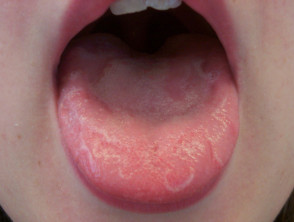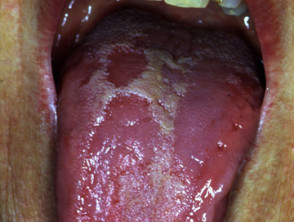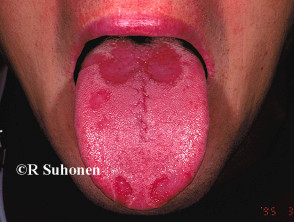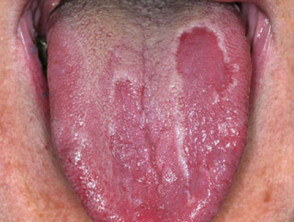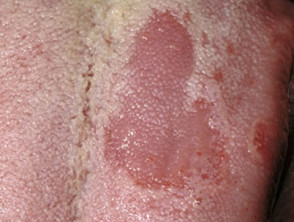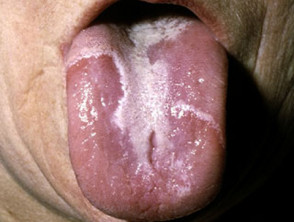What is geographic tongue?
Geographic tongue is a benign oral inflammatory condition characterised by loss of epithelium, particularly of the filiform papillae on the dorsum of the tongue.
Geographic tongue is also called benign migratory glossitis because the signs move around.
Geographic tongue
Who gets geographic tongue?
Geographic tongue affects approximately 1–3% of the adult population worldwide. It is less common in children. The incidence is twice as high in women than in men. Patients may have a family history of geographic tongue or fissured tongue.
What causes geographic tongue?
The cause of geographic tongue is unknown but geographic tongue occurs more often in patients who have psoriasis, especially pustular psoriasis.
It is also seen in patients with a food allergy, allergic contact dermatitis, asthma, atopic dermatitis, reactive arthritis, anaemia, hormonal disturbance, emotional stress and in patients with early-stage of type 1 diabetes.
What are the clinical features of geographic tongue?
Geographic tongue is characterised by irregularly-shaped, red, map-like, smooth and swollen patches surrounded by white lines. Geographic tongue can occur suddenly and persist for months or longer, and may often recur.
Most often there are no symptoms but burning or irritation of the tongue are common, particularly when eating hot, spicy and acidic food.
What are the complications of geographic tongue?
There are no major long-term complications associated with geographic tongue.
How is geographic tongue diagnosed?
The diagnosis of geographic tongue is based on clinical examination of the tongue and the patient history. Routine laboratory tests are usually normal.
What is the differential diagnosis for geographic tongue?
The differential diagnosis for geographic tongue includes:
- Oral candidiasis
- Oral psoriasis (rare)
- Oral lichen planus
- Trauma
- Herpes simplex
- Systemic lupus erythematosus
- Oral leukoplakia.
What is the treatment for geographic tongue?
There is no cure for geographic tongue. Usually, no treatment is required apart from reassurance.
Discomfort and burning sensations can be treated by avoiding eating hot, spicy and acidic food. Symptomatic treatments may include:
- Topical anaesthetic agents
- Antihistamine and anaesthetic mouthwash
- Topical steroid
- Topical tacrolimus.
What is the outcome for geographic tongue?
The outcome of geographic tongue is good. In most cases, it resolves over time without treatment.
